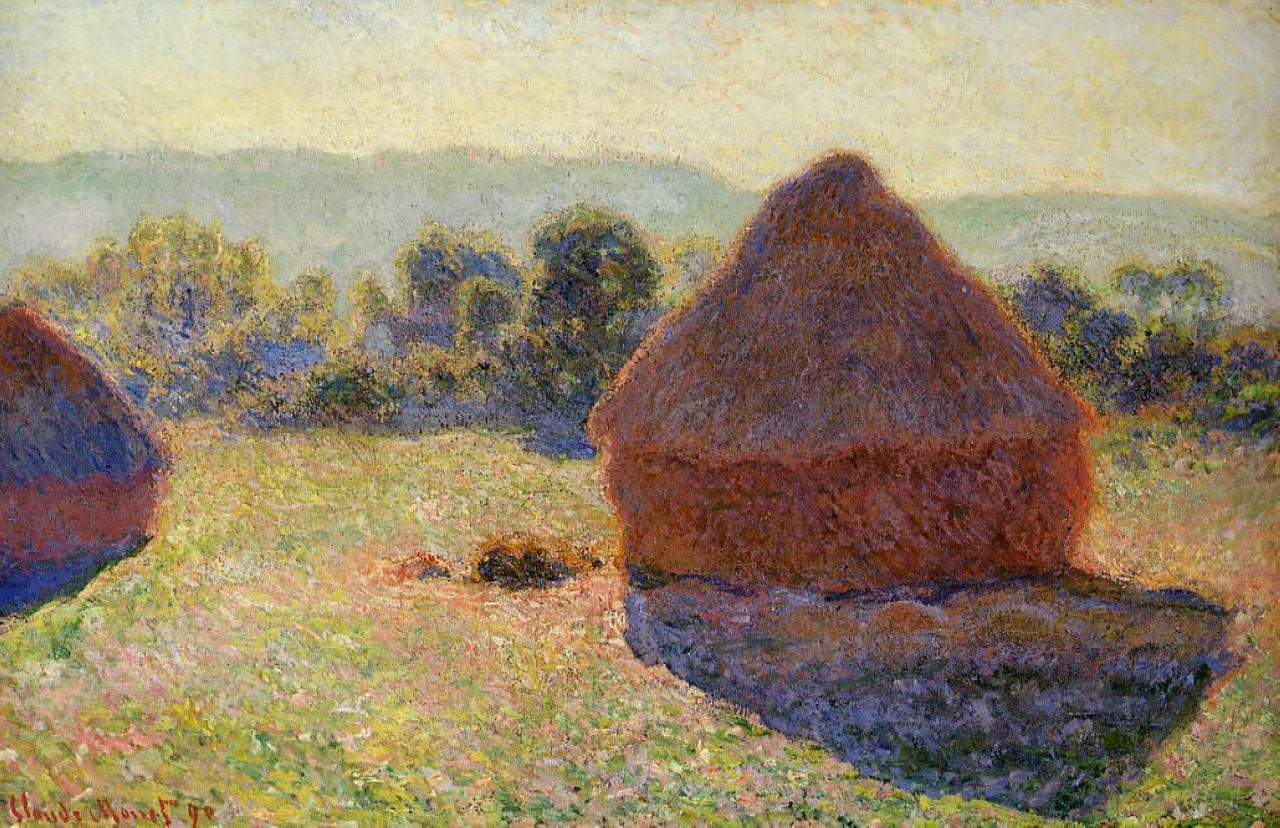Claude Monet - Grainstacks in the Sunlight, Midday 1891
 |
 |
 |
 |
 |
 |
 |

Grainstacks in the Sunlight, Midday 1891
65x100cm oil/canvas
National Gallery of Australia, Canberra
The image is only being used for informational and educational purposes
<< Previous G a l l e r y Next >>
From National Gallery of Australia, Canberra:
A painting executed in summer 1890, Haystacks, midday, suggests that prolonged study of the Red Fuji would have helped Monet to think out how to represent ‘the same light spreading everywhere’. He no longer used the rather inert, dark tone to articulate the fields and the haystacks, and has composed a tonally more unified whole from three scales of colour — warm oranges and pinks, yellows, greens and violet-blues. These are so interwoven, however, that the resulting colours are almost indescribable. Densely imbricated, countless small brushstrokes build up areas of colour that are as daringly simple as those in Hokusai’s Red Fuji. The disconcertingly dark shadow at the base of the stacks could have resulted from Monet’s attempt to represent the effects of peripheral vision, while he was trying to see the whole scene in terms of coloured light (it is like an area of shadow that one can sense rather than see at the edge of vision). In a strange way, such shadows also recall Hiroshige’s sharply defined shadows attached to the feet of his figures in Evening view of Saruwaka Street. Like other nineteenth-century artists of ukiyo-e, he was interested in European illusionistic devices such as perspective and shadows, but in his print, as in Monet’s painting, the shadows draw attention to the artificial construction of the work.